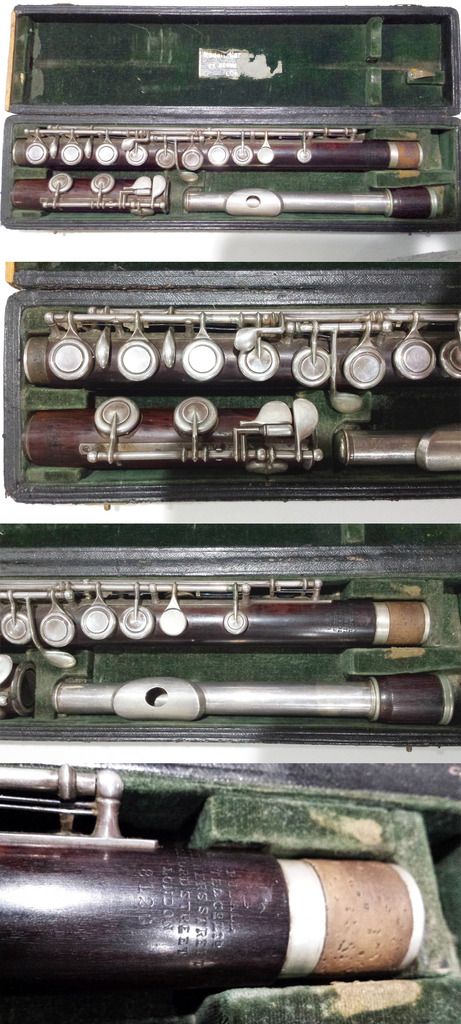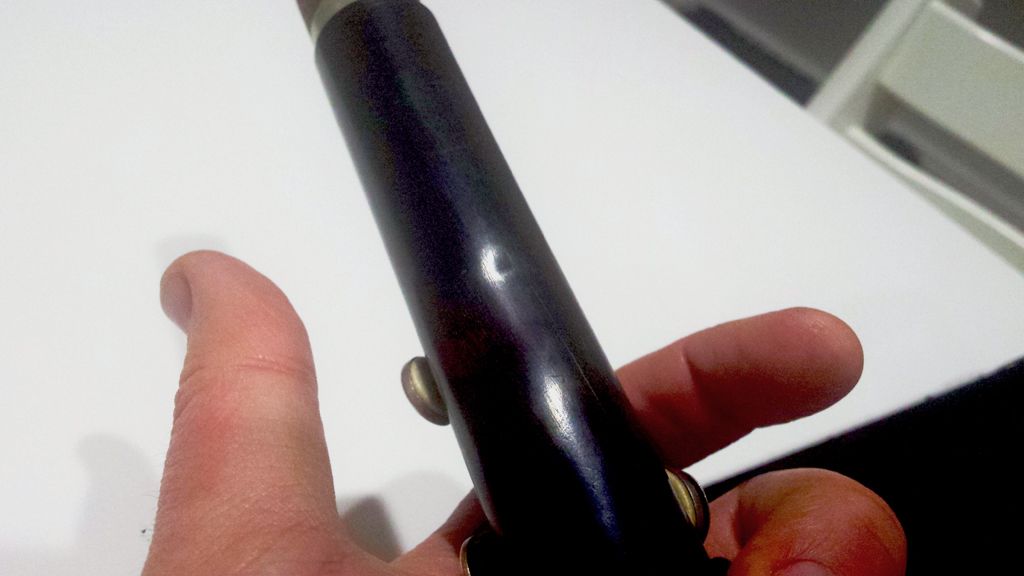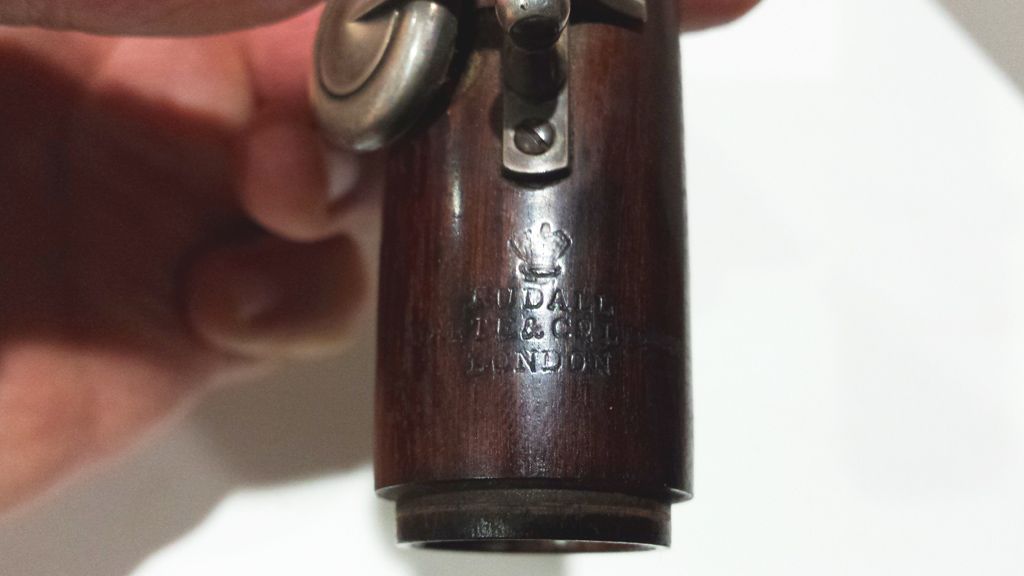Rudall Carte & Co. Ltd.
23 Berners Street
Boehm system
Serial # 8123
Cocuswood & silver
Replacement silver headjoint
Low Pitch
SL= 597mm (with the supplied silver headjoint and ditto my high pitch Radcliff cocuswood headjoint)
This is a late Rudall flute dating approximately from about 1940-42. Robert Bigio's wonderful book RR&C only lists serial numbers up to and including the year 1939, after which the stockbook gets hazy apparently.
Bought at an Adelaide auction house online for around £55 plus postage I took a punt on this cocuswood and silver sterling Boehm flute. I could see it was an Open G# and had a missing silver ferrule on the footjoint and a replacement silver headjoint. I was happy at that price for even just a parts flute or perhaps a functioning body.

Remarkably, it plays in tune and from Low C to the third register D.
The wood is in very fine condition. Much lighter in colour and in grain size than my Radcliff's Model. I even thought momentarily that it was an ebonite flute. No cracks, no repairs visible (see below however...).
All the silver keywork is in very fine condition with the exception for the G# key (technically it's the G key).
Bizarrely this flute has been converted from a closed G# flute to an open G# flute (usually it's the other way 'round!) The closed G# tonehole on the player-side of the flute has been plugged with some glue+compound material and is heavily sprung shut. The G# tonehole keycup has had the G# touchpiece arm soldered onto it and a bit of work to the keywork there too to make it operate as an Open G#.

So, it functions as an open G# flute quite perfectly well, but my plan is that after my - mostly cosmetic - restoration (including sealing the extra closed G# tonehole only with its pad, not an ugly plug) I'll have my repair technician restore the closed G# keywork. Shouldn't be too difficult for him. I just need to find funding for the visit.
The headjoint is not the original if the shape of the Rudall case is to be believed.
The replacement is a silver headjoint with a pretty damn ugly pot-metal and plastic/ebonite tenon sleeve cover.
The end-stopper is cocuswood lapped with cork and has a screw-in silver faceplate. Very similar to my Radcliff's Model end-stopper. I believe this could be a genuine silver Rudall headjoint replacement.
Any opinions?

Here at the Sydney's Powerhouse Museum they have a Radcliff's Model owned by Richard Chugg with a very similar looking silver headjoint added to its cocuswood body. The tenon sleeve job is so much better of course being the actual stamped cocuswood from the original headjoint, but the result is the much the same visually. Was this an Australian repair fad perhaps?
http://www.powerhousemuseum.com/collect ... irn=364416



The body sports an interesting optional extra: a very subtle but effective dip or groove for the lefthand index finger or the web of the thumb for better ergonomics. A nice touch.
It is visible below as the darkened spot between the two highlights:

Sadly, the silver ferrule is missing from the footjoint end. I may commission a silversmith to make a replacement:

So, now I'll strip it completely down. Clean and oil the wood. Clean, polish and oil the keywork and probably clean, steam iron and reseat the pads (as I did with my Rudall Carte Radcliff's Model in May). New corks too. Plus remove the yucky plug in the closed G# tonehole.
Many more photos of this new project are here and will continue to be uploaded as I progress:
http://s1088.photobucket.com/user/dubro ... ehm%208123
Cheers,
Vaughan